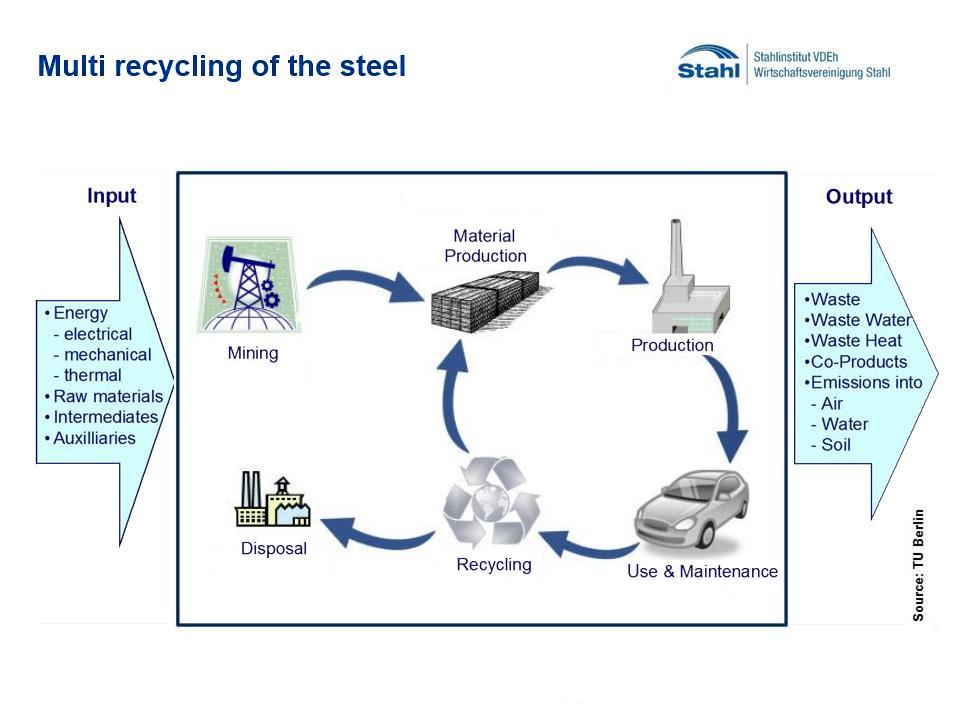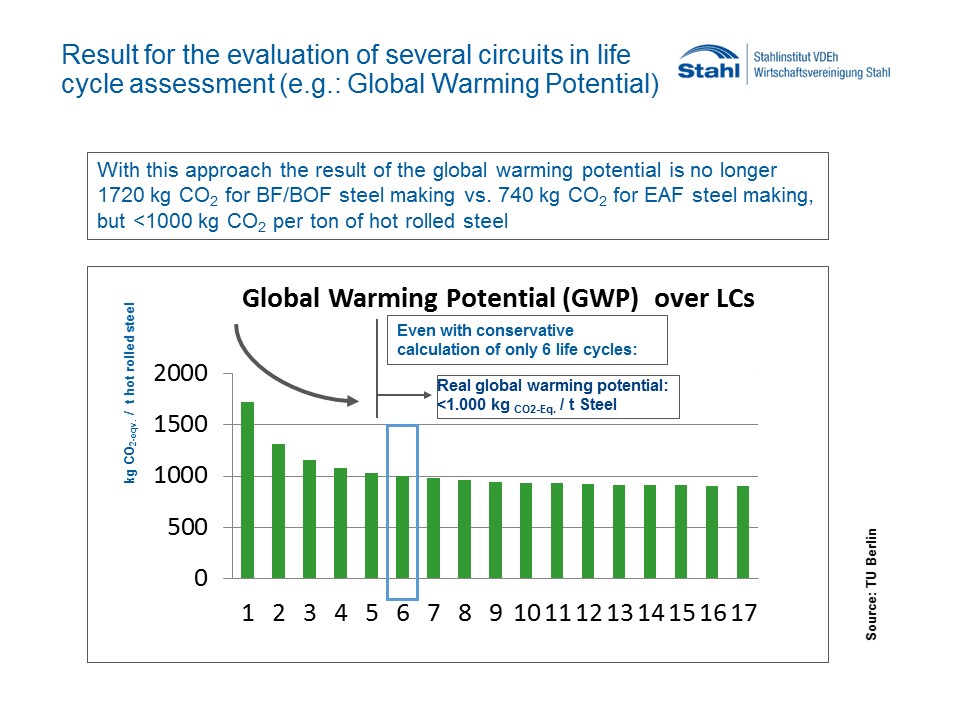Description
Permanent materials can be recycled several times (multi-recycling) and hence achieve an optimal saving of resources . A study by Technical University of Berlin, initiated by the Wirtschaftsvereinigung Stahl / Stahlinstitut VDEh, verifies this property is the case for steel, since recycled steel has the same material properties as “new” steel.
Steel recycling has been practiced for a long time. This is also the case for the recycling in successive cycles. So far, however, the theoretical basis, which was created by the multi-recycling study, was missing. On the basis of the ISO 14040/14044 standards the multi-recycling study is the first study to prove the multi-recycling process with an independent critical review.
Reasons for carrying out the study were the development of a method for evaluating the material steel on the basis on the existing standards (e.g. 14040/14044) in combination with a material pool view. Furthermore, an overview of the environmental profile and a holistic view, including the recycling processes for steel, are included which allows for a consistent and common mapping of the blast furnace and electric furnace route.
Added value
All processes of steel production use steel scrap as a raw material, even the primary route with blast furnace and basic oxygen furnace.
Multiple-recycling has the following effects:
- Saving of energy and resources. The recycling of one ton of steel scrap helps to save 1.5 tonnes of iron ore, 660 kg of iron ore and 300 kg of limestone. During the multirecycling process in six recycling cycles 1 tonne of primary steel leads to the production of more than three tonnes of steel products. This helps to save more than 4.5 tonnes of iron ore.
- Reduction of environmental effects, e.g. greenhouse gases or other emissions to air, water or soil.
Additionally, the multi-recycling approach helps to answer the controversial question of the allocation of loads or credits, in which the material is not arbitrarily assessed with a specific life cycle (LZ) but with the environmental impacts of a number of life cycles which are distributed evenly over the sum of all life cycles.
Challenges
- A quality management system for steel scrap going into the recycling facilities is necessary to guarantee that the successive recycling cycles are practicable. This system has to be continuously updated according to the requirements of the future. Such a quality system exists and must be continually adapted to the current situation, which is challenging.
- The motivation in the production chain and of end users to bring their end-of-life-product into a recycling system should increase. The policy should support and strengthen the collection and recycling of products.
- During the discussion of the waste framework directive in Europe there should be a harmonised method to measure Member State recycling rates at input into the ‘final recycling process’.
- In the Circular Economy Package current practices should be improved. Robust traceability systems are an integral component, which will help to get an accurate measurement system of real material recycling rates.
Partners
Technische Universität Berlin, Institut für Technischen Umweltschutz, Fachgebiet Sustainable Engineering, Sabrina Neugebauer, Prof. Dr. Matthias Finkbeiner Critical review by independent panel: Prof. Dr. W. Klöpffer (Editor-in-chief, Int. Journal of Life Cycle Assessment), Prof. R. K. Rosenbaum (Technical University of Denmark) and Dr. M. Buchert (Ökoinstitut e.V.)

